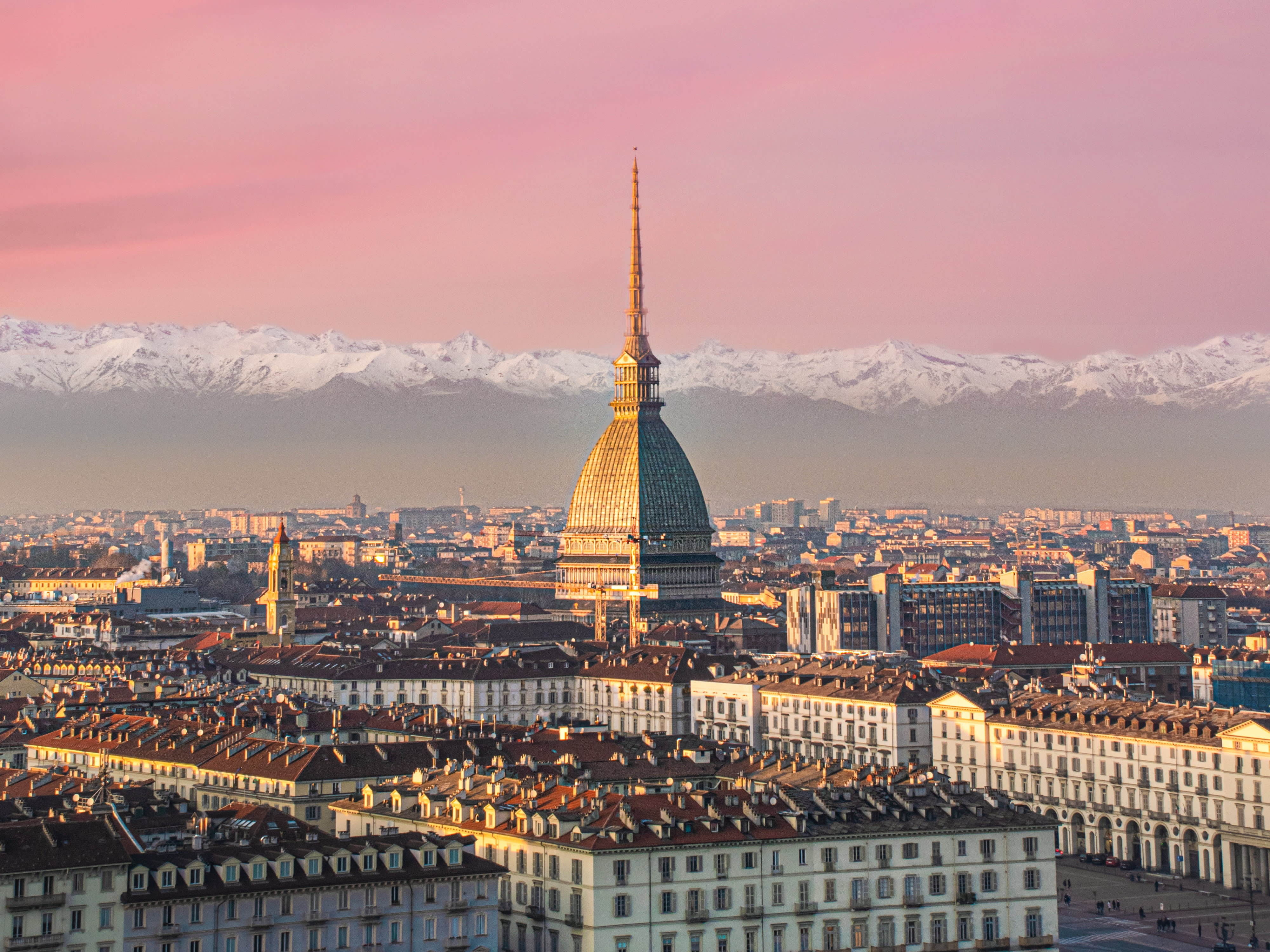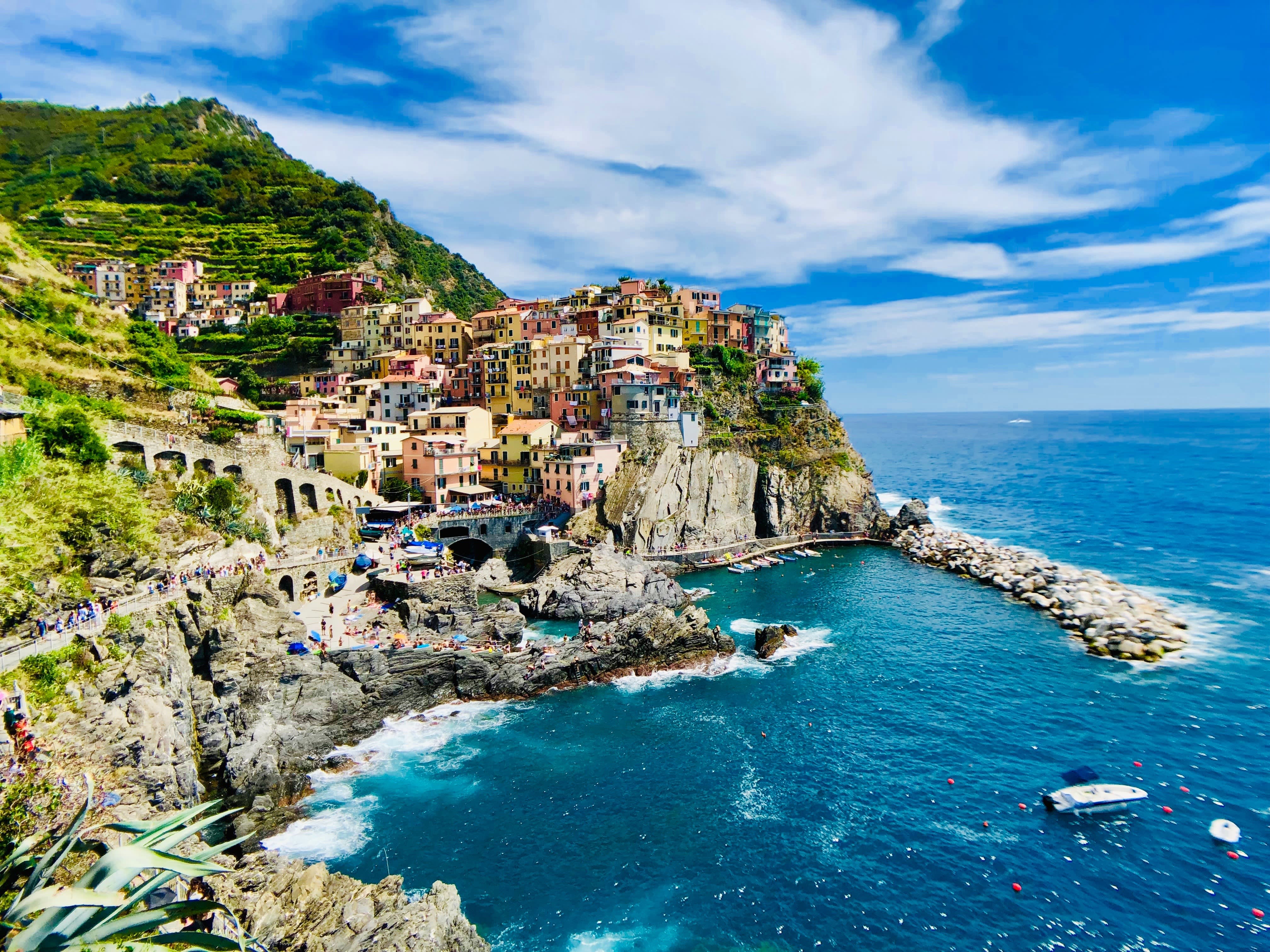Your guide to the cost of living in Italy
Find out how much it costs to live in Italy compared to other countries and how the prices there compare to Italian salaries.
Angelina

If you’re considering moving to Italy, it’s helpful to manage your expectations beforehand. For example, you might be wondering if you can live a good life in this country with what you earn. Or maybe you're still looking for the right job to sustain yourself in Italy. But worry no more, we'll break down the cost of living in Italy and put your mind to rest!
In this article we’ll talk about:
- average salaries in Italy,
- average cost of living in Italy per month,
- rental prices in Italy compared to other countries,
- cheapest cities in Italy,
- food prices in Italy,
- transportation costs in Italy,
- monthly living expenses in Italy compared to other countries.
After reading this, you'll be able to figure out how much you’d need to earn to live comfortably here, and which city fits best to your living standard.
Average salaries in Italy
To understand the quality of life a bit better, it’s good to understand the relation of the average salaries to the cost of living in Italy.
The average net salary in Italy is €1,572 (US$1,699) per month. We consider a net salary here as that’s what you take home (after taxes etc.) and that’s the amount you’ll spend on your rent, food and so on.
Is it expensive to live in Italy?
Italy is one of the cheapest countries to live in. In fact, Italy is the 4th cheapest country in Western Europe.
So how much does it cost to live in Italy?
To answer this question, let’s take a quick look at the average basic living expenses in Italy per month.
| Expense | Average cost |
|---|---|
| Housing | €988 (US$1,070) |
| Utilities | €198 (US$214) |
| Internet 60 mbps | €27.60 (US$29.82) |
| Monthly public transport pass | €35 (US$37.83) |
| Fitness club | €47.74 (US$51.62) |
| Groceries | €300 (US$324.77) |
| Leisure | €200 (US$216.51) |
| Total | €1,796.34 (US$1,944.66) |
Based on this, we can say that the average cost of living in Italy per month is around €1,796.34 (US$1,944.66). Sadly, that’s pretty high compared to the average salaries!
However each city is different and
the smaller towns in the South of Italy are generally cheaper than international cities like Milan, Rome, and Bologna.
For example, the cost of living in Lombardy is 1.23 times higher than the average in Italy. In contrast, the cost of living in Sicily is 1.12 times lower than the average.

Rental prices in Italy compared to the rest of the world
The best way to compare the cost of living in Italian cities is by looking at the average rent prices. They often serve as a good reflection of the price tag of a city. Plus, rent usually takes the largest chunk of your monthly expenses.
So, to have a nice overview, let’s compare the rent across the top Italian cities.
Average rent prices in popular Italian cities:
| City | Private room | Studio | Apartment |
|---|---|---|---|
| Milan | €720 (US$780) | €1,250 (US$1,353) | €1,800 (US$1,949) |
| Rome | €600 (US$650) | €970 (US$1,050) | €2,000 (US$2,165) |
| Florence | €600 (US$650) | €1,050 (US$1,137) | €1,600 (US$1,732) |
| Turin | €520 (US$563) | €724 (US$784) | €950 (US$1,028) |
Interesting, huh?
As you can see, Milan and Rome are among the most expensive Italian cities, especially in terms of rent. As a matter of fact, Milan’s residents spend over 40% of their income on rental expenses.
So what are the cheapest cities to live in Italy?
- Turin, Palermo, and Naples are the cheapest cities to live in in Italy.
- The cost of living in Milan is just slightly higher than the living costs in Rome.
- The cost of living in Florence is only slightly lower than the cost of living in Rome.
- The cost of living in Turin is 19% lower than in Florence.
Now, let's compare some popular Italian cities based on different categories of expenses.
How much does food cost in Italy?

Buying food and groceries in Italy is generally not cheap. But, your spending amount will depend on your living standards.
Do you want the best price & quality ratio? Then you’re better off buying fresh produce at a market or a greengrocer.
Want to save a few bucks? Italy has plenty of discount supermarkets such as Lidl and Aldi.
If you prefer doing groceries in a bio supermarket, that will of course be more expensive.
But here we’ll just consider the averages. So, add or deduct some costs based on your own lifestyle.
Let’s break it down:
Comparison of the average grocery prices in Italy:
| Expense | Rome | Milan | Florence | Turin |
|---|---|---|---|---|
| Milk (1 litre ) | €1.51 (US$1.63) | €1.36 (US$1.47) | €1.30 (US$1.41) | €1.18 (US$1.28 |
| Eggs (12) | €3.34 (US$3.61) | €3.84 (US$4.16) | €3.29 (US$3.56) | €2.97 (US$3.21) |
| Tomato (1kg) | €2.35 (US$2.54) | €2.54 (US$2.75) | €2.08 (US$2.25) | €1.77 (US$1.92) |
| Potato (1kg) | €1.42 (US$1.54) | €1.34 (US$1.45) | €1.27 (US$1.37) | €1.23 (US$1.33) |
| Bread | € 1.39 (US$1.50) | €1.08 (US$1.17) | €1.51 (US$1.63) | €0.94 (US$1.02) |
| Bottle of red wine | €9 (US$9.73) | €9 (US$9.73) | €5.64 (US$6.10) | €7 (US$7.57) |
Can’t choose between Rome and Milan? We’ve made a detailed comparison between these popular destinations.
Comparison of the average prices to eat out in Italy:
| Expense | Rome | Milan | Florence |
|---|---|---|---|
| Cappuccino | €1.42 (US$1.54) | €1.77 (US$1.91) | €1.47 (US$1.59) |
| Coca Cola (0.33) | €1.97 (US$2.13) | €2.64 (US$2.83) | €2.64 (US$2.83) |
| Pizza margherita | €8 (US$8.65) | €8 (US$8.65) | €7 (US$7.57) |
| Lunch menu | €15 (US$16.22) | €15 (US$16.22) | €15 (US$16.22) |
| Dinner ( 3 courses) | €28 (US$30.27) | €36 (US$38.92) | €30 (US$32.44) |
The price differences between the cities aren’t very significant and reflect the situation with the average rent.
Milan and Rome are the most expensive Italian cities to live in, but that’s also where you’ll generally get paid more.
While most of the living costs in Italy aren’t that much different from other countries, you can certainly get a pretty cheap cappuccino here!
Transportation costs in Italy
| Expense | Rome | Milan | Florence |
|---|---|---|---|
| Single ticket | €1.50 (US$1.62) | €2 (US$2.16) | €1.50 (US$1.62) |
| Day ticket | €7 (US$7.57) | €7 (US$7.57) | - |
| Monthly pass | €35 (US$37.84) | €39 | €35 (US$37.84) |
| Gas (1 litre) | €1.76 (US$1.90) | €1.74 (US$1.88) | €1.74 (US$1.88) |
| Taxi (1 km) | €1.10 - €1.60 (US$1.19 - US$1.73) | €1.12 - €1.68 (US$1.21 - US$1.82) | €0.98 - €1.80 (US$1.06 - US$1.95) |
As you can see, the transportation costs in Italy don’t differ that much from city to city. And they’re pretty low compared to other countries!
Overview of living expenses: Italy vs world
Now let’s compare some of the averages of the costs above to other countries.
Generalisation like this isn’t very accurate, but we’re here for the bigger picture, right?
Here’re the monthly living expenses in Italy vs Germany vs the Netherlands vs Spain vs the USA vs the UK vs Canada (excl. rent):
| Country | Transportation | Groceries (for 1) | 1 Meal (inexpensive restaurant) | Total |
|---|---|---|---|---|
| Italy | €35 (US$37.84) | €217 (US$234.63) | €15 (US$16.22) | €267 (US$288.69) |
| Germany | €70 (US$75.69) | €180 (US$194.62) | €10 (US$10.81) | €260 (US$281.12) |
| the Netherlands | €89 (US$96.23) | €250 (US$270.31) | €15 (US$16.22) | €354 (US$382.76) |
| Spain | €40 (US$43.25) | €145 (US$156.78) | €11 (US$11.89) | €196 (US$211.92) |
| the UK | €78 (US$84.34) | €212 (US$229.22) | €15 (US$16.22) | €305 (US$329.78) |
| the USA | €57 (US$61.63) | €272 (US$294.10) | €13 (US$14.06) | €342 (US$369.79) |
| Canada | €63 (US$68.12) | €265 (US$286.53) | €12 (US$12.97) | €340 (US$367.62) |
Don’t forget that you’ll still have some costs on top of it, such as entertainment of your liking and a phone subscription. And, luckily, the basic public health insurance in Italy is only €12.50 (US$13.52) per month!
In this comparison, you can see that the cost of living in Italy is about the same as in Germany. Food in Germany is cheaper, but the high transportation costs make up for that.
Out of all these countries, Spain is the cheapest place to live. The cost of living in Spain is 30% lower than the cost of living in Italy.
At the same time, comparing the cost of living in Italy vs Canada, we see that living expenses in Canada are 24% higher. In fact, Italy is also cheaper than the USA, the Netherlands, and the UK.
Add the cheaper rental prices to the equation and it becomes clear that Italy is a very affordable destination for expats!
Ready to rumble?
Whether you’re going to Italy to study or work, it’s better to start looking for your dream home early. Then you’ll surely find something that fits your budget!
This article is for informational purposes only.
Please reach out to content @housinganywhere.com if you have any suggestions or questions about the content on this page. For legal advice or help with specific situations, we recommend you contact the appropriate authorities.
Related articles
In this article
Moving to Italy?
Book your rental accommodation from verified landlords in Italy even before relocating. No viewings needed.
Search Now

